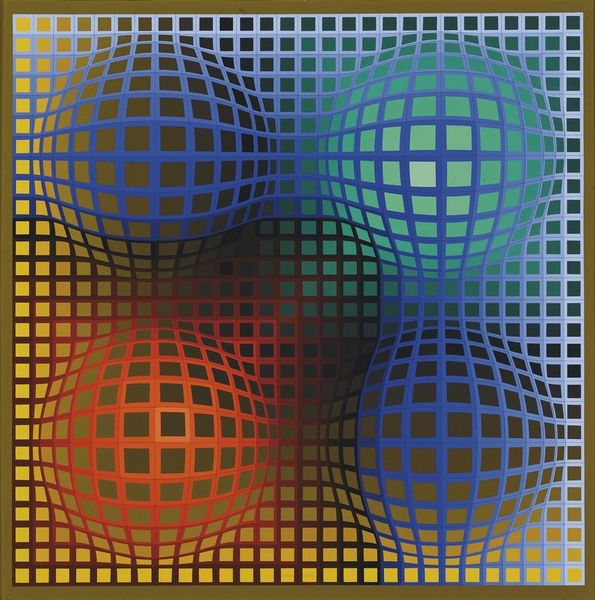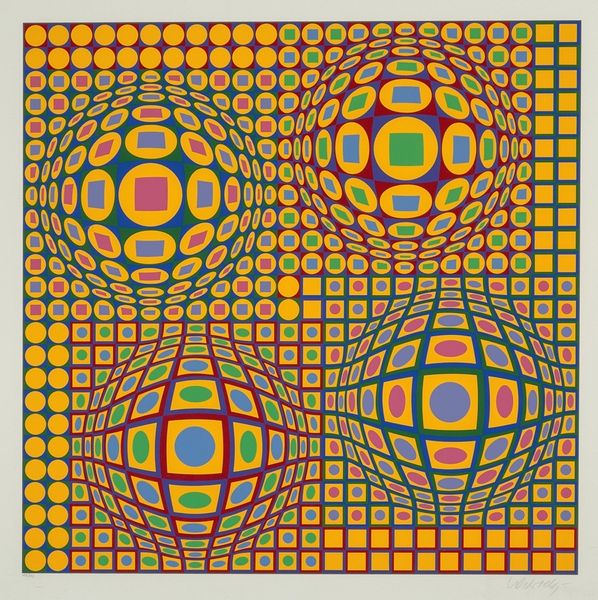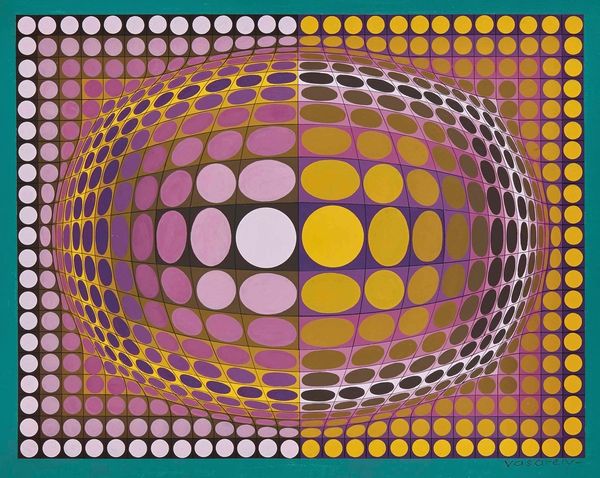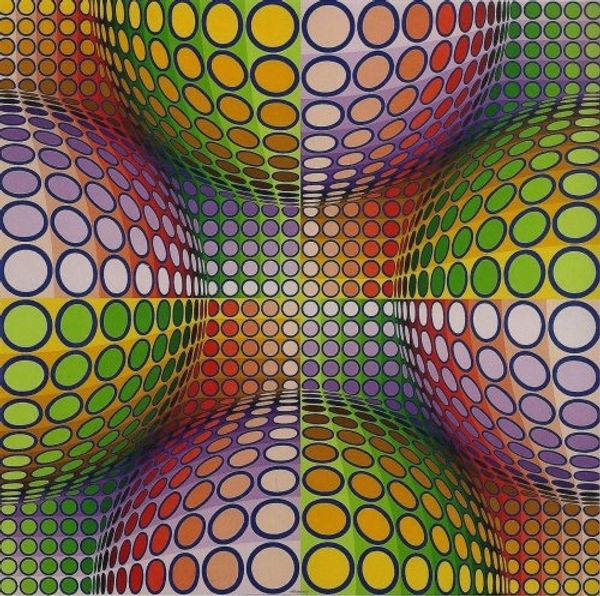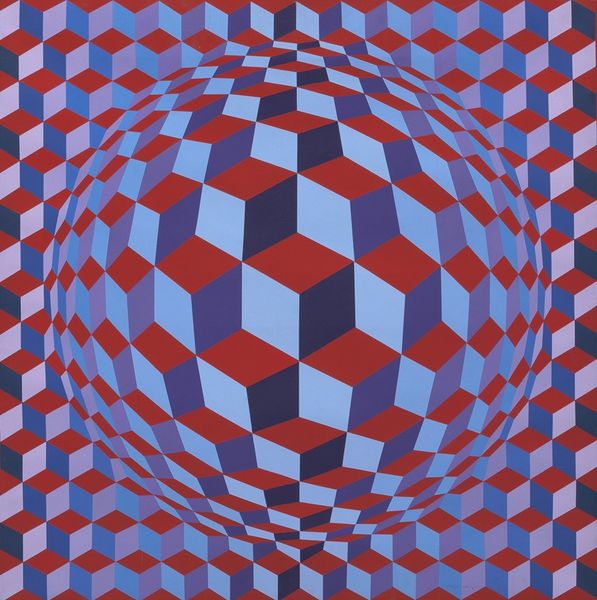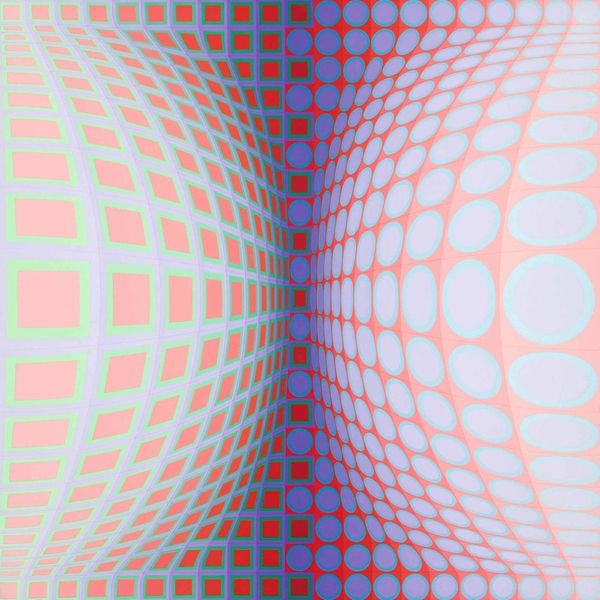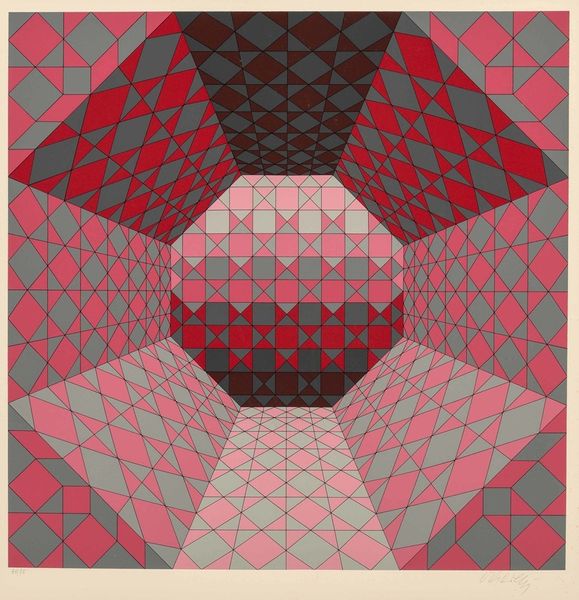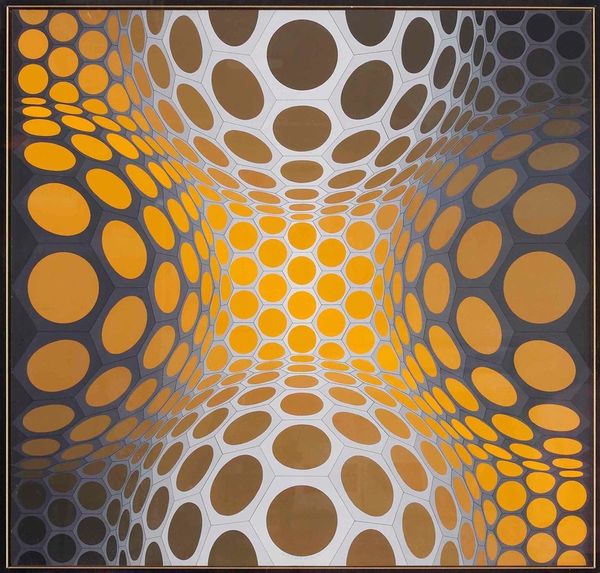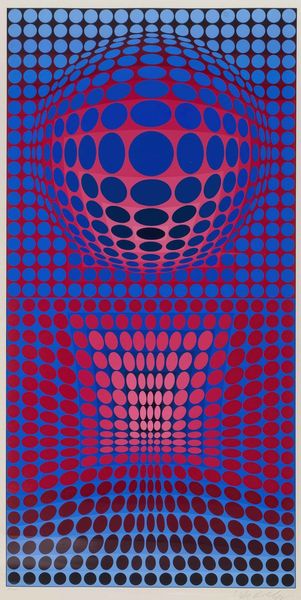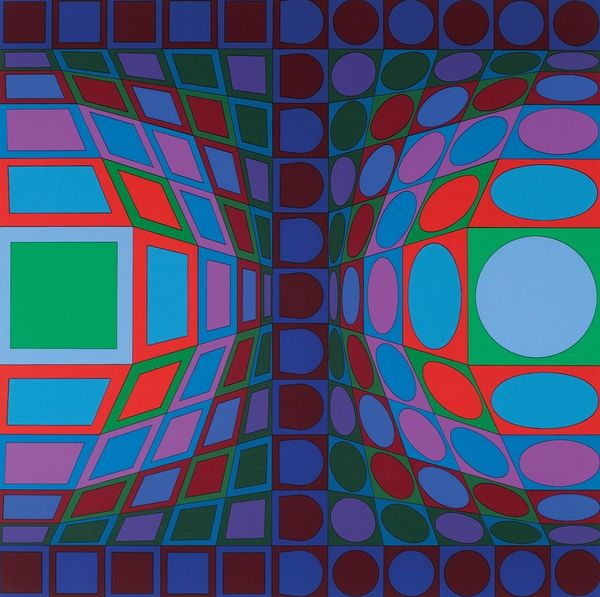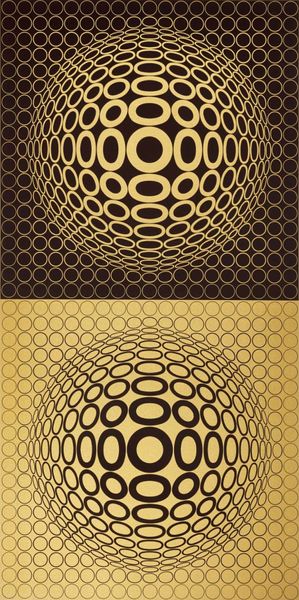
acrylic-paint
#
op-art
#
acrylic-paint
#
abstract
#
geometric pattern
#
abstract pattern
#
repetitive shape and pattern
#
minimal pattern
#
geometric
#
repetition of pattern
#
vertical pattern
#
abstraction
#
regular pattern
#
pattern repetition
#
layered pattern
#
combined pattern
Copyright: Modern Artists: Artvee
Curator: Victor Vasarely’s "Nebulus" created in 1978 using acrylic, is quite an example of Op Art. Editor: It assaults the eye in the best way! There’s almost a vibration created by the patterning, an intentional visual destabilization. Curator: It’s certainly engineered for that effect. Op Art often emphasizes the mechanics of seeing, highlighting how the eye and brain work to interpret visual data. It reminds me of factory production actually; systematically and methodically following directions to make a mass-produced artwork. The application of those acrylics to achieve the illusion is a marvel, really. Editor: And what do you make of those floating spheres composed of colorful cubes? The shapes and colors—red, blue, violet—they all feel very charged. Like orbs holding ancient, alchemical secrets! Curator: Fascinating interpretation! I see them as destabilizing the traditional concept of the canvas, though. By creating the illusion that these spheres are bursting out of the surface, Vasarely effectively blurs the boundary between the artwork and the space around it. This also speaks to the shift away from gestural abstraction to meticulous methods, such as printmaking. Editor: Still, cubes forming spheres conjure ideas about contained power. This era explored psychedelia, spirituality, and a general fascination with hidden knowledge, all mirrored here. Curator: Absolutely. These patterns, even geometric ones, were adopted into everyday commodities like clothing and wallpaper. “Art for All,” Vasarely declared! A sentiment that challenges the idea of the unique masterpiece. Editor: So interesting how he uses basic shapes to evoke such different readings and moods. You've highlighted the industrialization, while I tend to dwell on the possible iconographic significance... Curator: Yes, art always sparks numerous perceptions contingent on our vantage points and focus. Editor: Ultimately, Vasarely makes us think about perception itself, right? Curator: Agreed! A truly potent outcome through simple yet sophisticated techniques and symbolism.
Comments
No comments
Be the first to comment and join the conversation on the ultimate creative platform.
